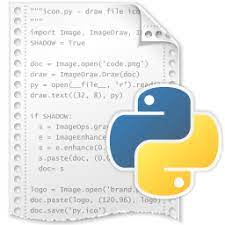Python, often referred to as the “Swiss Army Knife” of programming languages, has emerged as a versatile and powerful tool in the world of software development. With its clean syntax, readability, and extensive libraries, Python has become a favorite among developers for a wide range of applications, from web development and data science to artificial intelligence and automation.
I. A Brief History:
Python was created by Guido van Rossum and first released in 1991. Its design philosophy prioritizes code readability and simplicity, fostering a collaborative and efficient development environment. Python’s open-source nature has allowed a global community to contribute to its growth and evolution.
II. Core Features:
- Readable Syntax: Python’s syntax is clear, concise, and easy to understand, making it an ideal language for beginners. The use of indentation for code blocks enhances readability, enforcing a clean and consistent coding style.
- Extensive Libraries: Python’s rich standard library provides modules and packages for a variety of tasks, reducing the need to write code from scratch. Libraries such as NumPy, pandas, and Matplotlib are fundamental in fields like data science and machine learning.
- Cross-Platform Compatibility: Python is platform-independent, allowing developers to write code on one platform and run it on another without modification. This feature contributes to its popularity for cross-platform development.
- Dynamic Typing: Python is dynamically typed, enabling developers to create flexible and adaptable code. This allows for rapid development and easy maintenance, as the type of a variable is determined at runtime.
III. Application Domains:
- Web Development: Frameworks like Django and Flask empower developers to create robust and scalable web applications. Python’s simplicity accelerates the development process, while frameworks provide structure and best practices.
- Data Science and Machine Learning: Python has become the lingua franca for data scientists and machine learning engineers. Libraries like TensorFlow and PyTorch facilitate the development of advanced machine learning models, and Jupyter Notebooks offer an interactive environment for data exploration and analysis.
- Automation and Scripting: Python’s versatility extends to automation and scripting tasks. Its ease of integration with other languages and systems makes it an excellent choice for writing scripts for automating repetitive tasks.
- Artificial Intelligence and Robotics: Python is widely used in artificial intelligence and robotics for tasks such as natural language processing, computer vision, and controlling robotic systems. Its simplicity and extensive libraries contribute to the rapid development of AI applications.
IV. Community and Ecosystem:
Python boasts a thriving global community that actively contributes to its growth. The Python Package Index (PyPI) hosts a vast repository of third-party libraries and tools, fostering collaboration and innovation within the ecosystem.
V. Future Trends:
As technology continues to evolve, Python remains at the forefront of innovation. With ongoing updates, improvements, and community-driven initiatives, Python is poised to play a pivotal role in shaping the future of software development.
Conclusion:
Python’s rise to prominence is a testament to its adaptability and ease of use. Whether you’re a beginner exploring the world of programming or an experienced developer seeking a powerful and flexible tool, Python offers a welcoming environment and a myriad of possibilities. As the Python community continues to grow, so does the language’s influence across diverse domains, solidifying its place as a key player in the ever-evolving landscape of technology.
